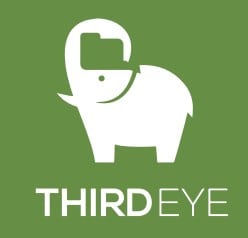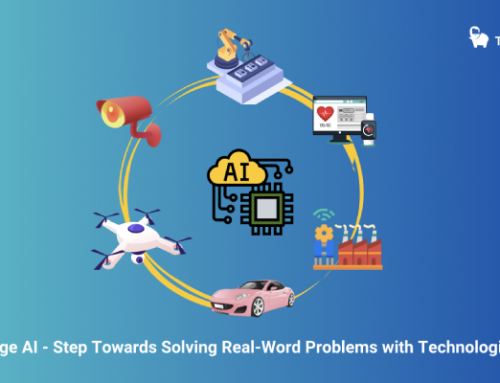Next-gen revenue cycle to refine value-based care with AI, advanced analytics
Technology to facilitate a patient’s understanding of insurance coverage and out-of-pocket cost for pending services will feature prominently.

Follow the money. That’s something all healthcare organizations must do, and do well, especially during a period of changing financial models and expectations.
Revenue cycle management systems are bread and butter when it comes to what healthcare organizations need in health IT. But the next generation features and functions of revenue cycle management systems may be anything but ordinary, according to experts.
For one thing, expect next-generation revenue cycle management systems to boast quite advanced analytics, said Kellye Sherbet, president of RCM services at Aprima Medical Software, which markets EHR, practice management and revenue cycle management systems for medical group practices.
“Healthcare organizations require sophisticated analytics to perform a deep dive into their information and look at the margins for ancillary services provided,” Sherbet said. “For example, what is being collected in total from patients and payers for performing labs or injectables versus the cost to offer them.”
Analytics also will be able to pinpoint opportunities for additional profit, as well as which value-based contracts will offer the best return.
“As we move closer toward value-based care, analytics become even more important, along with the ability to bring in clinical information to support the revenue cycle,” she said. “Value-based reimbursements will be tied to what outcomes you can show on the clinical side. Understanding a patient population beyond just who has what diagnosis allows practices to not only focus objectives for care where they can do the most good, it allows practices to opt into financially beneficial programs with incentives that align with their population.”
“As we move closer toward value-based care, analytics become even more important, along with the ability to bring in clinical information to support the revenue cycle.”
Kellye Sherbet, Aprima Medical Software
Factors such as multiple chronic problems, medications and even the patients’ willingness to take responsibility for making necessary changes all become deciding factors in what programs make the most sense, she added.
On a related note, the next generation will see tools that aid with patient responsibility, Sherbet said.
“Higher deductibles and increased patient responsibility gives added pressure to make sure that healthcare organizations are able to collect patient balances,” she said. “New tools and features are entering the market that enable facilities to capture credit card information, verify insurance benefits prior to an office visit or procedure, and implement a workflow that will educate patients upfront about the amount of their responsibility.”
Jeff Hurst, senior vice president of revenue cycle management and president of RevWorks at Cerner, suggests the next generation of revenue cycle management will be supported by artificial intelligence to empower the proactive self-sufficiency of consumers and staff efficiency for providers.
“Leveraging AI, healthcare technology will be positioned to further the work to reduce the cost to collect in registration, scheduling, charge capture, health information management, and billing and collections,” Hurst said. “As competition drives down prices, providers will look to become more efficient and consumers will look to become more educated and involved in their care plans by adopting intelligent technology.”
“Leveraging AI, healthcare technology will be positioned to further the work to reduce the cost to collect in registration, scheduling, charge capture, health information management, and billing and collections.”
Jeff Hurst, Cerner
Hurst added that technology to facilitate understanding of insurance coverage and out-of-pocket cost for pending services will feature prominently in the next generation.
“Using technology to facilitate dialogue between patient and physician is critical to the next generation of revenue cycle management,” he said. “Providers will be able to use AI to present the patient with out-of-pocket costs before care is provided and alternative treatments specific to each person right in the exam room.”
Costs can often impact a patient’s decision to pursue care, so facilitating an open dialogue with patients ahead of time improves the healthcare experience and can help with collections because the patient will have visibility to their out-of-pocket costs upfront, he added.
On another front, automation of compliant documentation and claim generation will be important to the next generation, Hurst said.
“AI can help aid providers in creating compliant documentation that can lead to more accurate claim generation,” he explained. “For example, the interaction between physician and patient could be recorded to watch and listen to the individual care experiences and generate documentation based on the encounter.”
The data then is gathered from each encounter and automatically is codified and transmitted to identify and secure the appropriate funding for the interaction, eliminating the traditional claim and revenue cycle process, he said.
Meanwhile, consumerism and patient satisfaction will impact the next generation of revenue cycle management by requiring data and analytics that can handle their needs, said Meredith Wilson, senior vice president, contract manager and patient estimates suite, at Experian Health.
“As the link between patient satisfaction and a health organization’s revenue continue to grow, efforts to create a better patient financial experience are crucial.”
Meredith Wilson, Experian Health
“As the link between patient satisfaction and a health organization’s revenue continue to grow, efforts to create a better patient financial experience are crucial,” she said. “Using comprehensive data and analytics to power the revenue cycle and patient relationship management initiatives allows health systems to encompass the end-to-end patient journey to ensure streamlined operations, measure and improve performance with payers, as well as provide accurate insights into each unique patient and their needs.”
Patient payment responsibility has increased and this requires healthcare organizations to optimize their collections from patients and payers simultaneously, Wilson added.
“Using automated technology that monitors claims data, real-time eligibility and benefits information, payer contracts, and charge description master information to ensure payers are fully meeting their obligations allows for accurate transparency in the cost of healthcare,” she said. “By closing the gap in payer contracts and reimbursement, healthcare organizations can accurately provide transparent cost estimates throughout every patient’s continuum of care.”
And in addition to providing accurate patient estimates, healthcare organizations need to empower patients with a frictionless financial experience, she said. By incorporating credit data into the patient billing process, she explained, healthcare organizations can enable a people-first product design to price transparency and collections that extend benefits to more people by understanding the financial situation of each patient.
“Credit data provides deeper insight into a patient’s propensity to pay and financial disposition allowing healthcare organizations to identify the best financial pathway – financial assistance, payment plans, deposits, etc. – for each patient at, or before, the time of service,” Wilson said. “Leveraging credit data improves both patient satisfaction, by personalizing the billing experience, and financial performance for healthcare organizations, by optimizing accounts receivable performance.”
Twitter: @SiwickiHealthIT
Email the writer: bill.siwicki@himssmedia.com










